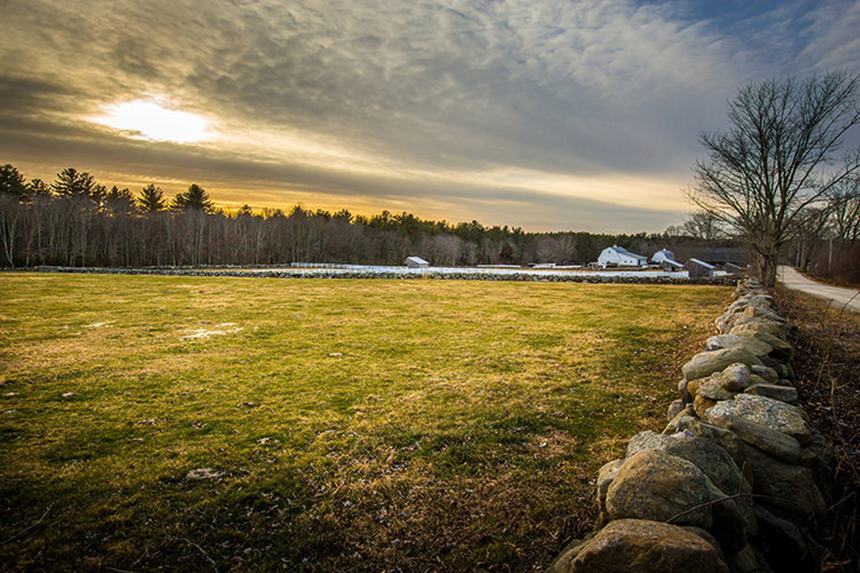By TIM FAULKNER/ecoRI News staff
 |
| Broadwall Farm in Coventry, R.I., will remain as agricultural use. (Ayla Fox/Shed Light Productions) |
The market price, however, is significantly higher, as developers pay as much as 10 times the agricultural value for open land.
That builder payout is hard to resist for farmers sitting on a highly valued asset, and the steep cost of space discourages aspiring farmers from investing in land of their own.
This transition to suburbanization
has cost the state 80 percent of its farmland since 1945, according to the
Rhode Island Department of Environmental Management (DEM).
DEM’s Division of
Agriculture wants to preserve the state’s shrinking stock of farmland while
supporting an upsurge in young, first-time farmers. Farming contributes about
$240 million annually to the local economy and offers another $90 million in
habitat value, flood prevention, carbon sequestration and air-quality
improvement, according to DEM.
In the coming weeks, the Division of Agriculture will publicize a solution that brings together land owners and would-be farmers.
The Farm Access Program will make land more affordable by allowing the state to buy farmland at the appraised value, which is determined by its highest-price use, typically selling the land as house lots. The land will then be resold to a farmer for its agricultural value, which is typically about a fifth of the appraised price.
“What we are trying to
achieve here is that agricultural value so that it is not impacted by market
pressures,” said Ken Ayars, DEM's chief of agriculture.
The program is funded
through $3 million from the 2016
Green Economy Bond referendum. DEM has already tried to spend
that money but hasn't found suitable farmland for the program. Several new
buyers and sellers emerged after a recent Associated Press report about the
Farm Access Program and more are expected to come forward after the forthcoming
media rollout by DEM and the Division of Agriculture.
Ayars and Michelle Sheehan,
state land conservation program manager, are the contacts for the program.
There are no deadlines to apply and the program will run continuously until the
money is gone.
During public hearings for
the program held in 2016 and 2017 the farmland-purchase concept received
support from newer farmers and resistance from established ones. The program drew
criticism from some farmers and politicians who are distrustful
of state government.
At the hearings, some newer
farmers said they hoped to stay in Rhode Island and support its vibrant food
movement, but had to go to Massachusetts and other states were farmland is less
expensive. Farmland in Massachusetts is valued about 25 percent less than in
Rhode Island.
Ayars noted that DEM isn't
owning the farmland but simply facilitating the transfer of land between
farmers to make it more affordable and to ensure the space is preserved for
agriculture.
Federal farm funding
The latest version of the national farm bill offers a 25 percent increases for the Specialty Crop Block Grant Program, which in Rhode Island supports the Harvesting Rhode Island TV series and research and development for new farm ideas, such as an automated green-laser scarecrow.
The latest version of the national farm bill offers a 25 percent increases for the Specialty Crop Block Grant Program, which in Rhode Island supports the Harvesting Rhode Island TV series and research and development for new farm ideas, such as an automated green-laser scarecrow.
Overall, however, the
Republican bill is being criticized for $350 million in cuts to farm programs
and imposing work requirements for low-income recipients of food stamps. The
cuts would also eliminate financial support for farmers markets and food hubs,
organic certification, some loans for rural farms, and renewable-energy
assistance.
The bill may have the votes
to pass the House of Representatives. However, the Senate has promised to
defeat the legislation and submit its own bipartisan bill.